Devotees visit a community puja pandal on the ‘Navami’ of the Durga Puja festival, in Kolkata, on Oct. 23, 2023.
| Photo Credit: PTI
An analysis of the air quality index (AQI) during Durga Puja showed that Kolkata enjoyed clean air during the festival, but pollution worsened to usual levels almost immediately afterwards.
Traffic regulations were imposed in the city from October 17 to 24 this year; apart from relieving pandal hoppers and daily commuters, and helping to maintain emergency services, this move also reduced air pollution levels. The rainy weather during the festival, when lakhs of people descended on the city, also improved the air quality.
The mean daily AQI dropped steadily from 122.75 on October 18 (moderate) to 74.41 (satisfactory) on October 23 on the eve of Navami, and then dipped further to 44.39 (good) on October 24 on the eve of Maha Dashami. While PM10 levels had been slightly above the 60 ug/m3 permissible limit prescribed the Central Pollution Control Board, the PM2.5 concentration was marginally below the prescribed 40 ug/m3 limit. Both saw a drastic drop on Maha Dashami itself, on October 24.
Traffic restrictions
After Durga Puja, however, air quality deteriorated drastically, following the removal of traffic regulations. The AQI promptly spiked back to the moderate category, hitting 102.51 by October 27. The AQI data was compiled by SwitchON Foundation, based on an analyisis of data from several stations of the West Bengal Pollution Control Board, placed in different parts of Kolkata.
“The air quality improved pleasantly during the Durga Puja festivals, but it has regrettably deteriorated to pre-puja levels once more. This decline can be largely attributed to reduced vehicle movement and weather events,” said Vinay Jaju, managing director of the SwitchON Foundation.
Experts emphasises that the October 10 traffic notification from the Kolkata Police, which prohibited all types of goods vehicles on the city’s roads between 8 a.m. and 4 a.m. (except emergency services) from October 17 to 24, helped improve air quality.
Public transport dependence
The presence of low-pressure systems and the rainfall, particularly during the last day of Durga Puja, also contributed to a reduction in air pollution within the city. This favourable weather condition alleviated the usual pollution concerns associated with the festive season, when lakhs of people descend on the streets.
In Frames | Mesmerising nine nights
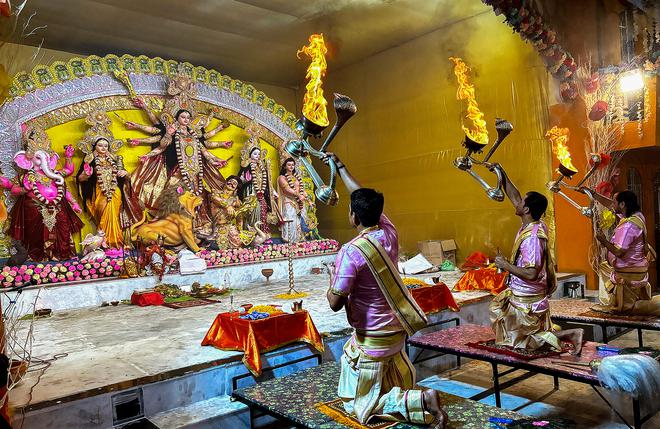
Bedecked pandal: A priest performs Navaratri aarti at the American Colony Durga puja mandap in Guwahati.
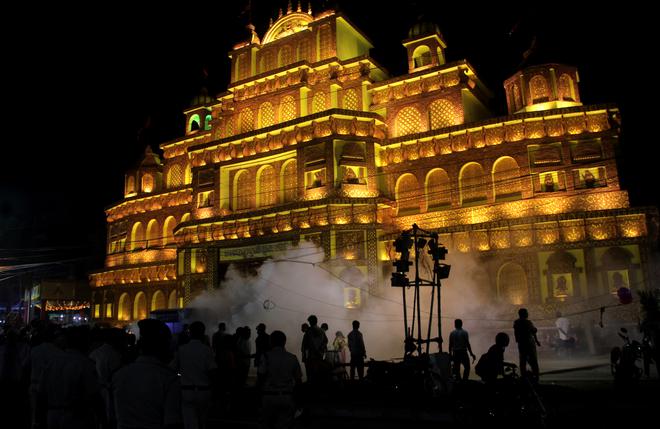
Mundane matters:Even with festivities in full swing, Bhubaneswar municipality conducts fogging outside a pandal thronged by worshippers, as part of its fight against rising dengue cases.
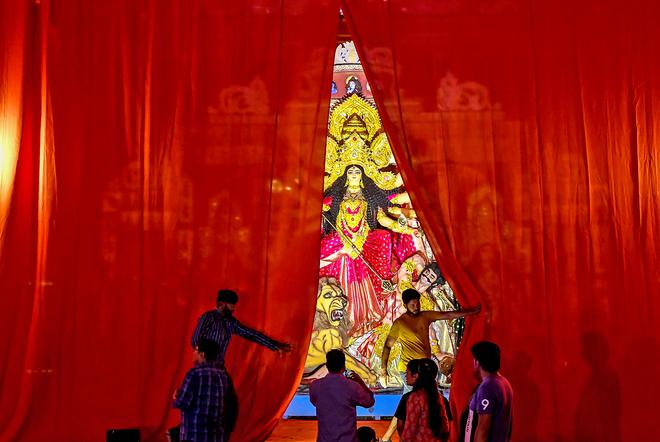
First dekko: The first look of Goddess Durga Idol at the Bengal Club Pandal in Mumbai.
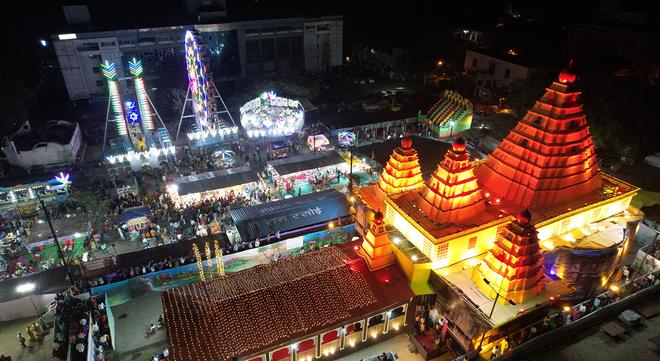
One step ahead: A pandal in Bhopal modeled on Ayodhya’s upcoming Ram temple.
Sacred ritual: A priest applies Shidur (as pronounced in Bengali) during aarti at a pandal on the sixth day of Durga Puja in C.R. Park, New Delhi on Friday
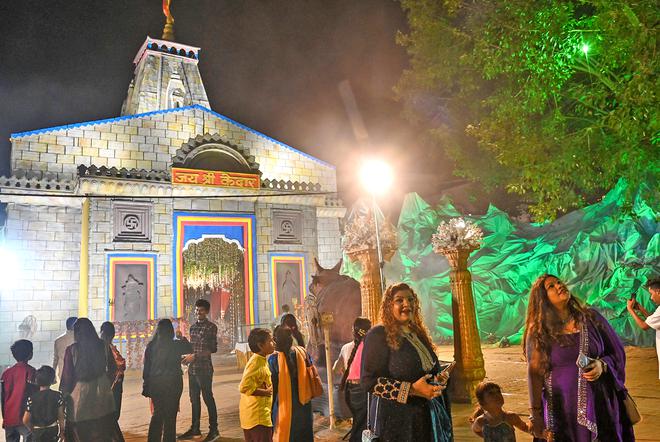
To the mountains: A pandal themed on the Kedarnath Dham in Bhopal.
Short break: A scene from the New Town Sharbojonin in east Kolkata, just before Durga Puja celebrations reach a peak.
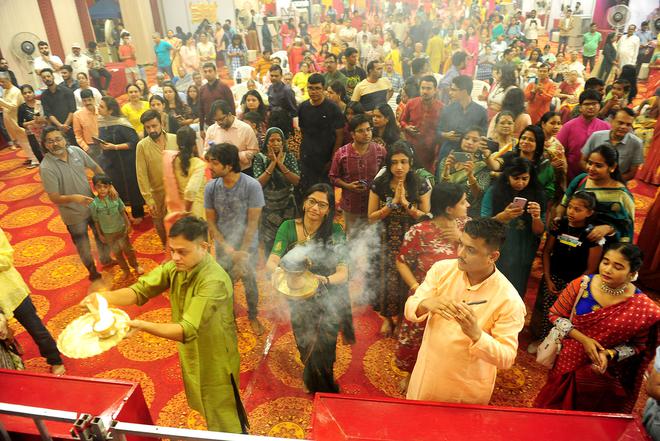
Prayer time: Devotees gathered at the Kalibari Temple pandal in Ahmedabad on Friday.
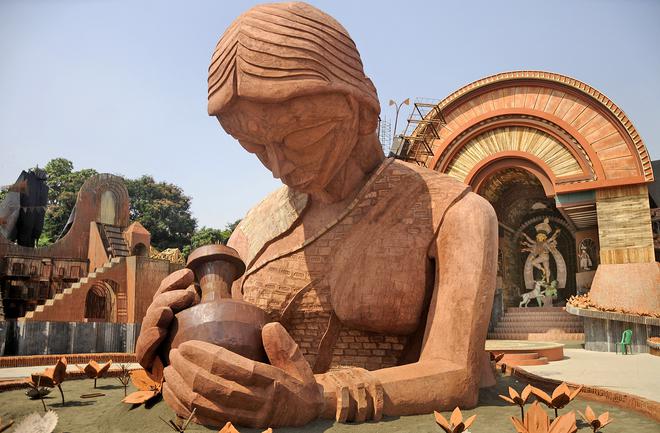
Intricate craft: A Durga idol at the Raj Danga Nobo Uday Sangha in South Kolkata.
1/3
The number of passengers who availed the services of the Kolkata Metro between Mahapanchami and Dashami (the five days of Durga Puja) crossed over 41 lakh. Experts say that this dependence on public transport rather than personal vehicles also improved the AQI during this period. This highlights the effectiveness of daily strategies — such as good traffic management, and promoting public transport as the preferred mode of intra-city commuting — in rapidly improving air quality.
As the AQI slides downwards again, Mr. Jaju cautioned that the city is at risk of turning into a pollution-filled gas chamber again as Diwali and the winter season approach. “We must be diligent in avoiding firecrackers and taking essential measures to combat air pollution,” he added.